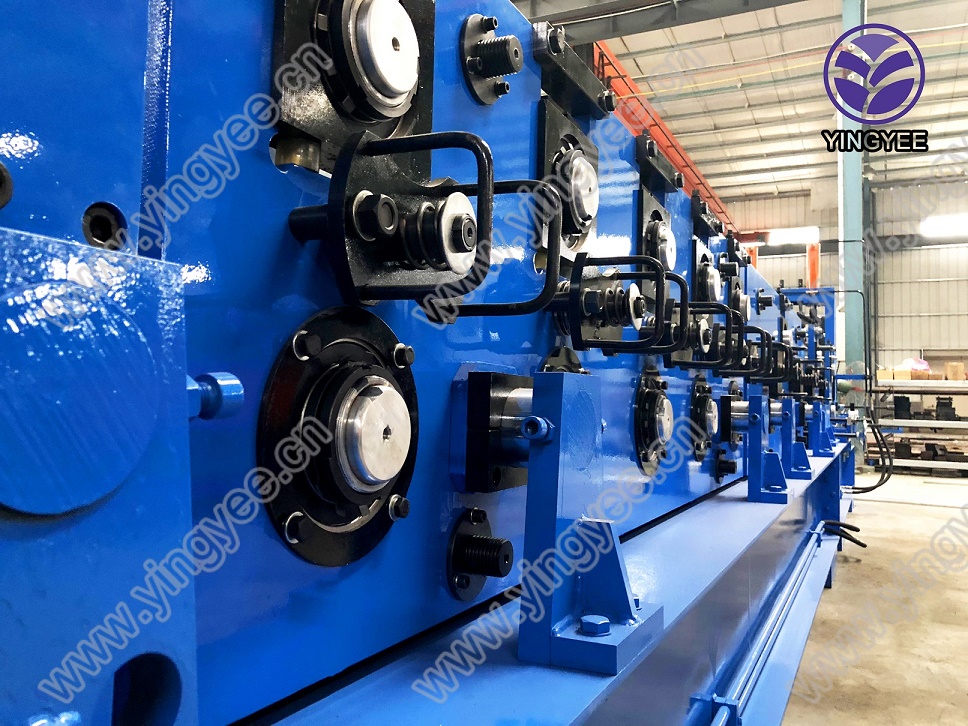
Understanding Stud and Track Drywall Forming Machines
In the construction industry, drywall has become a standard material for creating interior walls and ceilings. As the demand for quick and efficient construction techniques continues to grow, the need for advanced machinery to fabricate drywall components has never been greater. One such innovation is the stud and track drywall forming machine, which streamlines the production process and enhances the quality of fabricated components.
What is a Stud and Track Drywall Forming Machine?
A stud and track drywall forming machine is a specialized piece of equipment designed to manufacture steel or metal studs and tracks used in the framing of walls and ceilings. The machine operates through a series of processes that cut, shape, and assemble the metal into the desired configurations, ultimately resulting in strong, durable components that are essential for standard drywall installations.
The Importance of Studs and Tracks
Studs are vertical framing members that support drywall panels, while tracks are horizontal elements that hold the studs in place. Both components play a critical role in ensuring that walls are structurally sound, capable of supporting weight, and resistant to environmental factors. With the introduction of a stud and track drywall forming machine, manufacturers can produce these components more efficiently than ever before, resulting in significant time and cost savings.
Advantages of Using Stud and Track Drywall Forming Machines
1. Increased Production Efficiency One of the primary advantages of these machines is their ability to produce high quantities of studs and tracks in a short period. This capability is essential for large construction projects where time is of the essence. By automating the manufacturing process, companies can significantly reduce labor costs and minimize human error.
2. Quality Control The precision of stud and track forming machines ensures that each component meets strict dimensional tolerances. This consistency is key in achieving high-quality drywall installations. Manual fabrication, on the other hand, often leads to variations that can compromise the integrity of the structure.

3. Flexibility and Customization Modern machines offer programmable settings, allowing manufacturers to produce various sizes and profiles of studs and tracks. This flexibility is crucial for accommodating different building designs and specifications, making these machines ideal for both standard and custom projects.
4. Material Efficiency By optimizing the cutting process, stud and track drywall forming machines reduce waste significantly. Less material waste not only lowers production costs but also contributes to more sustainable construction practices—a growing priority in today’s eco-conscious world.
5. Streamlined Operations With integrated features such as automatic feeding, cutting, and forming, these machines simplify the production flow. This streamlined operation allows manufacturers to allocate resources more effectively while focusing on other aspects of their business, such as product development and customer service.
Applications in the Construction Industry
Stud and track drywall forming machines are extensively used in various applications within the construction industry. They are vital in the construction of residential homes, commercial buildings, and industrial structures. Additionally, these machines facilitate the creation of internal partitions, offices, and even temporary structures like exhibition stands and event spaces.
Furthermore, the rise of prefabricated construction techniques has heightened the relevance of these machines. Prefabrication allows components to be built off-site and then assembled at the location, which is more efficient and can lead to faster project completion times. Stud and track machines play a pivotal role in this emerging trend, as they ensure the timely delivery of high-quality materials.
Conclusion
As the construction landscape continues to evolve, the stud and track drywall forming machine stands out as a game-changing innovation. Its efficiency, precision, and flexibility make it a vital asset for manufacturers looking to excel in a competitive market. By embracing such advanced technology, companies can enhance their productivity, reduce waste, and improve the overall quality of their drywall installations. In a world where speed and efficiency are paramount, investing in a stud and track drywall forming machine is a strategic decision for any construction business looking to thrive in the modern era.